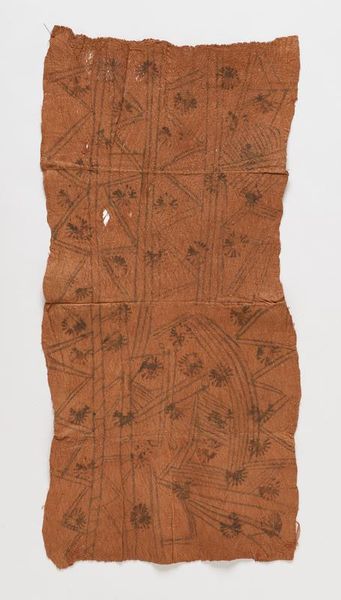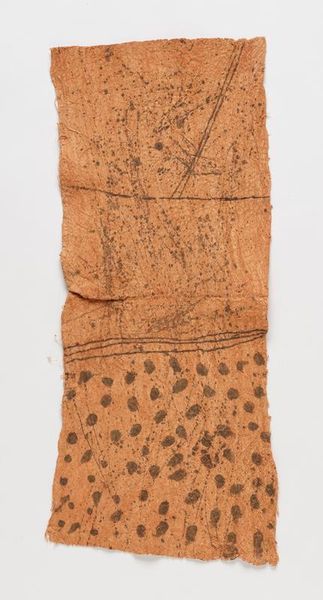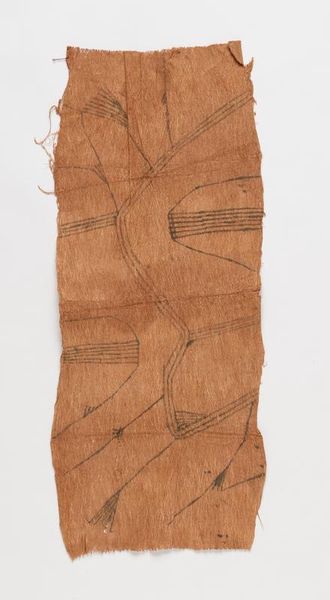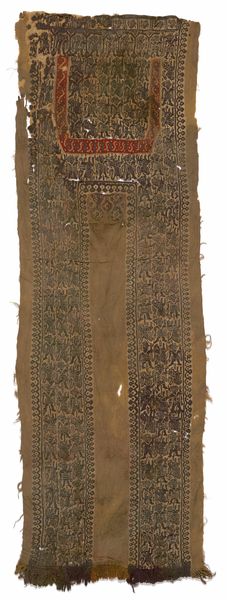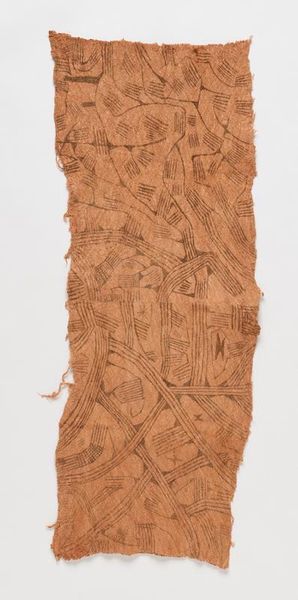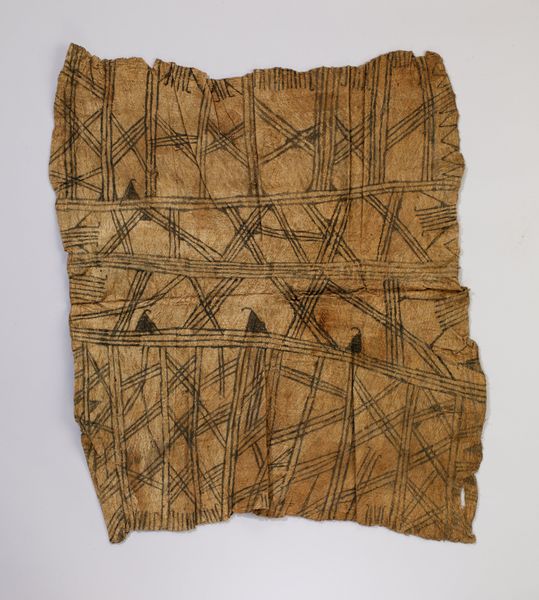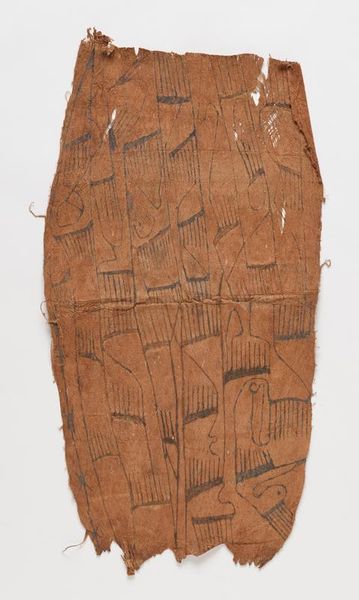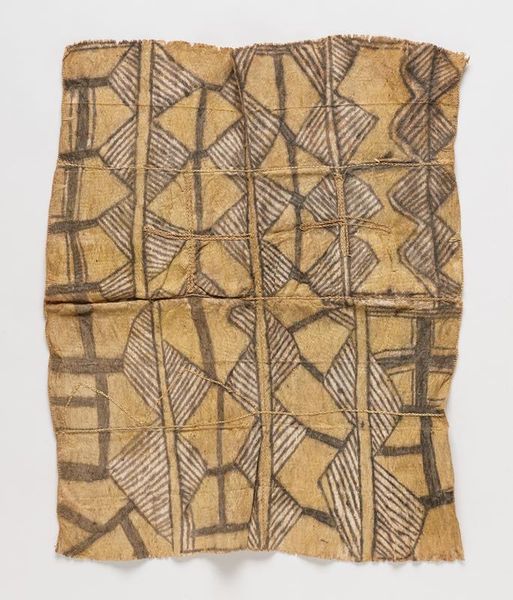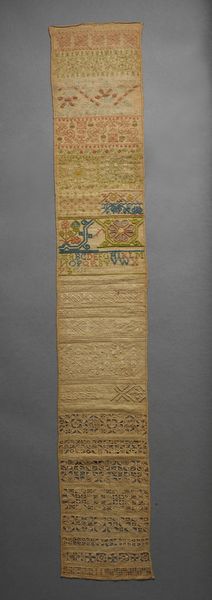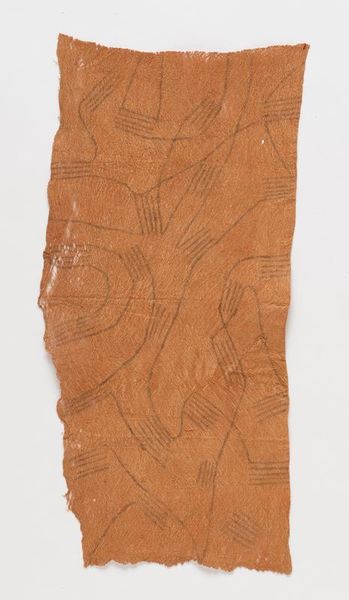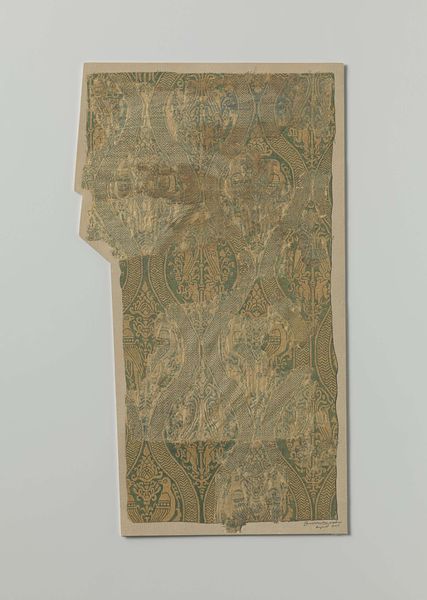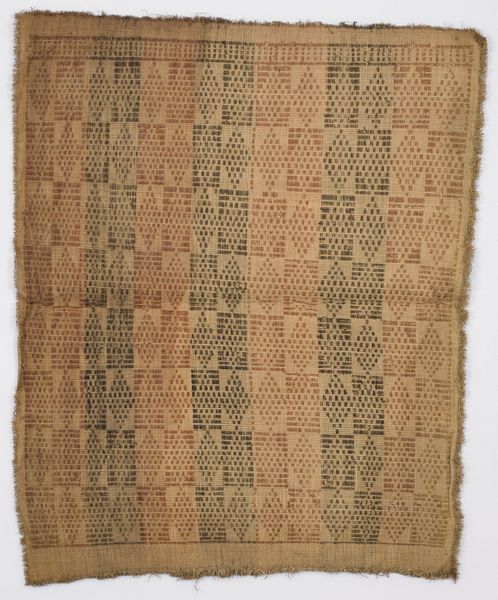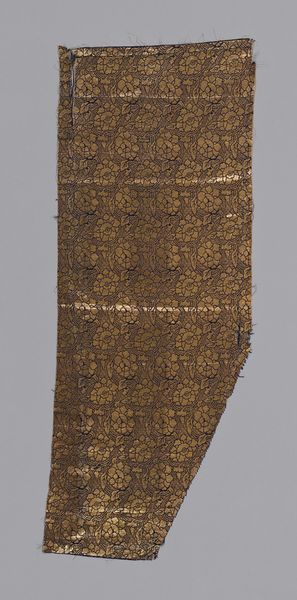
fibre-art, textile
#
fibre-art
#
pattern
#
textile
#
organic pattern
#
geometric
Dimensions: 34 1/4 × 16 1/4 in. (87 × 41.28 cm)
Copyright: No Known Copyright
Editor: So, this is a Barkcloth panel from the Mbuti people, around 1930. The medium includes fibre, pigment, and ink – it feels very earthy and textural to me. How do you read this work? Curator: Immediately, the interplay of geometric and organic patterns speaks volumes. Consider how the Mbuti, deeply connected to the Ituri rainforest, translate their world onto this cloth. What do you notice about the repeated motifs? Editor: There are these radiating bursts, almost like stylized flowers or suns. And then these grid-like lines dividing the surface. It feels both chaotic and ordered. Curator: Exactly! The radiating patterns are potent symbols – perhaps representing growth, community, or even ancestral connection. The imposed geometry suggests a framework. How might that framework relate to their social structures, perhaps? Editor: Interesting. So, the grid isn’t just decorative. Could it be a symbolic map of their territory, or maybe even their relationships? Curator: Potentially! Barkcloth production itself is a ritual act. The patterns applied are rarely random but imbued with cultural narratives and individual expression, a complex relationship between nature, culture, and individual. Editor: It is pretty amazing that it’s both ancient and fresh at the same time. Looking at it now I read the geometric elements representing the artists imposing order to abstract or reflect nature’s order and rhythm using their own unique expression, rather than it just being pretty. Curator: Indeed! The panel serves as a tangible link to Mbuti culture, holding layers of meaning woven into its very fibers, encouraging continued storytelling. Editor: This definitely gives me a new appreciation for textile arts and their depth of meaning.
Comments
minneapolisinstituteofart almost 2 years ago
⋮
Mbuti men collect pieces of the inner layer of tree bark, soak them in water, and pound them until they are thin and pliable. Mbuti women then use twigs or their fingers to decorate these canvases with intricate designs that show repetitions of a single element or various groups of motifs. The Mbuti people live in the Ituri rainforest in the northeastern Democratic Republic of Congo, and the abstract imagery in their art expresses the shapes and motions of their natural environment. The barkcloth paintings can be seen as maps of the forest, invoking trails and webs, insects and animals, leaves and shelters. Yet these visual compositions also refer to the language of Mbuti music, characterized by syncope, free improvisation, and polyrhythm. As such, the painted barkcloths become graphic soundscapes, rendering a multitude of sonic events in conjunction with silence, captured by the paintings’ negative space.
Join the conversation
Join millions of artists and users on Artera today and experience the ultimate creative platform.
